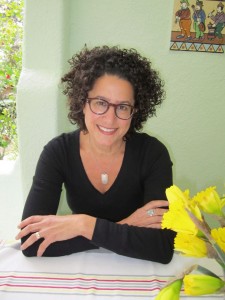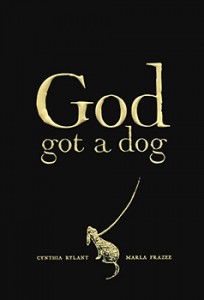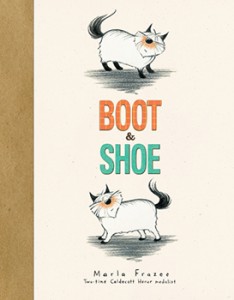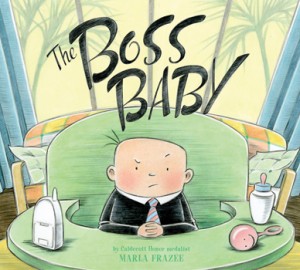Dear Readers…
DearEditor.com’s Revision Week kicks off with Marla Frazee, bestselling author and illustrator of more than nineteen picture books as well as the winner of numerous awards, including two Caldecott Honors. Marla wields both words and pictures, and her insights into the revision process are a wonderful way to start the week.
Please join Marla and The Editor for Day 1 of Revision Week, and find out how to win today’s “Free Partial Edit” from The Editor.
 Marla Frazee was awarded a Caldecott Honor for All the World and A Couple of Boys Have the Best Week Ever. She is the author-illustrator of Roller Coaster, Walk On!, The Boss Baby, Boot & Shoe, and the upcoming The Farmer and the Clown, as well as the illustrator of many other books including The Seven Silly Eaters, Stars, and the NYT bestselling Clementine series. She most recently illustrated God Got a Dog by Cynthia Rylant. For 20 years, Marla has “paid it forward” by teaching children’s book illustration at Art Center College of Design in Pasadena, CA. I’m a huge Marla fan. In fact, Christmas isn’t Christmas for my family without multiple readings of her Santa Claus the World’s Number One Toy Expert.
Marla Frazee was awarded a Caldecott Honor for All the World and A Couple of Boys Have the Best Week Ever. She is the author-illustrator of Roller Coaster, Walk On!, The Boss Baby, Boot & Shoe, and the upcoming The Farmer and the Clown, as well as the illustrator of many other books including The Seven Silly Eaters, Stars, and the NYT bestselling Clementine series. She most recently illustrated God Got a Dog by Cynthia Rylant. For 20 years, Marla has “paid it forward” by teaching children’s book illustration at Art Center College of Design in Pasadena, CA. I’m a huge Marla fan. In fact, Christmas isn’t Christmas for my family without multiple readings of her Santa Claus the World’s Number One Toy Expert.
*Marla’s interview follows the Rafflecopter form for today’s Free Partial Edit Giveaway. Scroll down for her full interview.
When you are both the author and illustrator for a book, does the story start its development as words or pictures? For me, it usually starts almost by accident with a doodle of a character. Or two. Once a character has my attention, I spin out possible stories and scenarios. For a while, this all plays out in my head –– like a small movie. If I start to get bored with it all, it fades away. But if I remain intrigued, I keep at it. Once I’ve got my teeth in some storyline, I will draw a little and/or write a little until something starts to take root. This can take a few days or weeks or years.
How many drafts does it typically take before you feel confident about the character and story choices you made? Countless. I mean it. I have NO clue. A lot. Over 10? Yes. Over 25? Maybe. Over 50? Sometimes. I don’t ever save them all because I get a lot of satisfaction out of trashing things.
Which draft typically gets shown to your editor? How much revising happens after the editor sees that draft?  At this point I’ve written and illustrated seven picture books, and they’ve all been edited by Allyn Johnston, who for the past five years has been the VP/Publisher of Beach Lane Books [an imprint of Simon & Schuster]. Allyn and I work very closely together at every stage of the book’s development. I don’t think of revising as revising. It’s more a question of, “Are we getting somewhere?” If we aren’t, I may decide to hibernate with the project for a while until I know where I’m trying to go. I can’t expect Allyn or anyone else to help me get where I’m going if I don’t even know where I want to go. Once that becomes clearer, then it is very helpful to collaborate. Are we getting there? Are we heading some other direction? Do we need to turn around and try again? [Editor’s note: Readers, click over to Marla’s web page for God Got a Dog for the background on that project, which gives fascinating insight into Allyn and Marla’s working relationship.]
At this point I’ve written and illustrated seven picture books, and they’ve all been edited by Allyn Johnston, who for the past five years has been the VP/Publisher of Beach Lane Books [an imprint of Simon & Schuster]. Allyn and I work very closely together at every stage of the book’s development. I don’t think of revising as revising. It’s more a question of, “Are we getting somewhere?” If we aren’t, I may decide to hibernate with the project for a while until I know where I’m trying to go. I can’t expect Allyn or anyone else to help me get where I’m going if I don’t even know where I want to go. Once that becomes clearer, then it is very helpful to collaborate. Are we getting there? Are we heading some other direction? Do we need to turn around and try again? [Editor’s note: Readers, click over to Marla’s web page for God Got a Dog for the background on that project, which gives fascinating insight into Allyn and Marla’s working relationship.]
Do you use critique partners? I am the flake member of an awesome critique group. We’ve been meeting once a month for over 20 years. Or they have. I love the friendship, the camaraderie, and the trust that has developed between us. I mean, they tolerate my inability to be a consistent attendee and never, ever make me feel bad about it. Sometimes, when I go, I go to talk about work.
Can you share an experience of having a story problem you didn’t think you could solve but eventually did?  When I was working on the initial thumbnails and sketch dummies for Boot & Shoe, I felt the story could’ve been more easily told as an animated cartoon. There were two almost identical dogs who hung out on different sides of a house, chased a squirrel around the house, got confused and turned around, and then couldn’t figure out where the other dog was. It was a story that required a lot of action in the pictures and needed a lot of directional clarification, but I was trying to tell it in a form where pictures are still and the action moves primarily from left to right. I puzzled it out for many weeks. I almost gave up a number of times.
When I was working on the initial thumbnails and sketch dummies for Boot & Shoe, I felt the story could’ve been more easily told as an animated cartoon. There were two almost identical dogs who hung out on different sides of a house, chased a squirrel around the house, got confused and turned around, and then couldn’t figure out where the other dog was. It was a story that required a lot of action in the pictures and needed a lot of directional clarification, but I was trying to tell it in a form where pictures are still and the action moves primarily from left to right. I puzzled it out for many weeks. I almost gave up a number of times.
 I’m so glad for that insight into Boot & Shoe, one of my favorite picture books. What’s the most drastic thing you’ve done to a story while revising? The most drastic thing? I got the idea for The Boss Baby and it seemed really workable. I thought it was going to write and illustrate itself, honestly. It felt as if the idea arrived fully formed. But the more I worked on it, the less excited Allyn was about it. I couldn’t figure it out. It seemed as if the project was going to die a slow, anguished death. But the character still kept cracking me up, so I knew there was something there. I renamed the character and book “The Little F***er” and started over again. I worked on a tiny sketch dummy in the corner of a local coffee house, hoping that no one would ask to see what I was doing. Recasting it helped give the project the edge it needed, ultimately. I still have “The Little F***er” artifact, in case anyone would like to check it out.
I’m so glad for that insight into Boot & Shoe, one of my favorite picture books. What’s the most drastic thing you’ve done to a story while revising? The most drastic thing? I got the idea for The Boss Baby and it seemed really workable. I thought it was going to write and illustrate itself, honestly. It felt as if the idea arrived fully formed. But the more I worked on it, the less excited Allyn was about it. I couldn’t figure it out. It seemed as if the project was going to die a slow, anguished death. But the character still kept cracking me up, so I knew there was something there. I renamed the character and book “The Little F***er” and started over again. I worked on a tiny sketch dummy in the corner of a local coffee house, hoping that no one would ask to see what I was doing. Recasting it helped give the project the edge it needed, ultimately. I still have “The Little F***er” artifact, in case anyone would like to check it out.
How do you know you’ve got the final draft? It isn’t ever completely final. Eventually we run out of time. The trick is to allow enough time in the schedule so that we can catch as much as possible before we’ve got to wrap.
Thank you so much, Marla, for sharing your revision process!